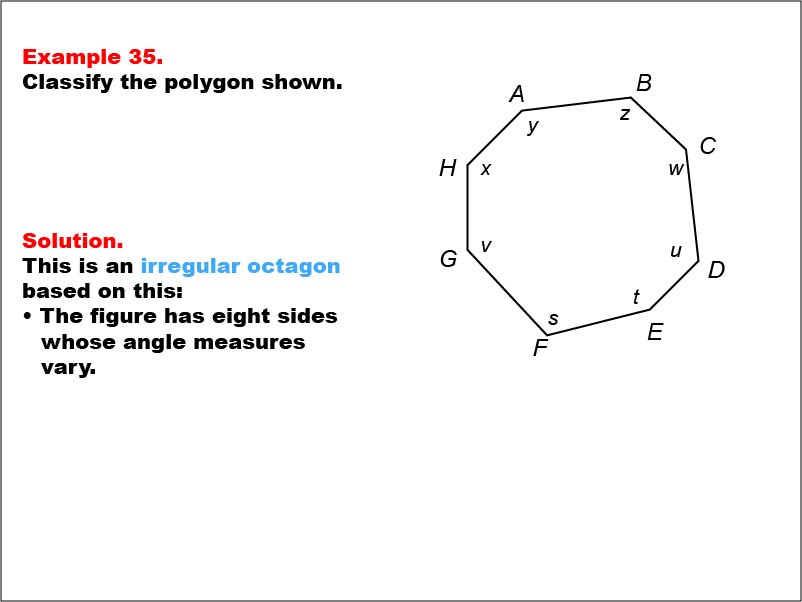
Display Title
Math Example--Polygons--Polygon Classification: Example 35
Display Title
Math Example--Polygons--Polygon Classification: Example 35

Topic
Polygons
Description
This example presents an octagon with sides labeled as x, y, z, w, u, t, s, and v. The sides are of varying lengths and angles, indicating it is irregular. It illustrates how using different variables for both side lengths and angles can suggest irregularity in a polygon.
Polygon classification is a crucial topic in geometry that helps students distinguish between regular and irregular shapes. This collection of examples provides a comprehensive look at various types of octagons, highlighting the importance of considering both side lengths and angle measures in determining regularity.
Presenting multiple worked-out examples is essential for students to fully grasp the concept of polygon classification. Each example offers a unique perspective, allowing students to compare and contrast different scenarios and develop a deeper understanding of what makes a polygon regular or irregular based on multiple criteria.
Teacher's Script: Take a look at this octagon, everyone. We see different variables used for both sides and angles. What does this suggest about the polygon? Even without specific measurements, how can we use this information to classify the octagon as irregular? Let's discuss why using different variables for both sides and angles indicates that the octagon is likely not regular.
For a complete collection of math examples related to Polygons click on this link: Math Examples: Polygon Classification Collection.
| Common Core Standards | CCSS.MATH.CONTENT.5.G.B.3, CCSS.MATH.CONTENT.7.G.B.6 |
|---|---|
| Grade Range | 6 - 8 |
| Curriculum Nodes |
Geometry • Polygons • Definition of a Polygon |
| Copyright Year | 2013 |
| Keywords | polygons, classification |